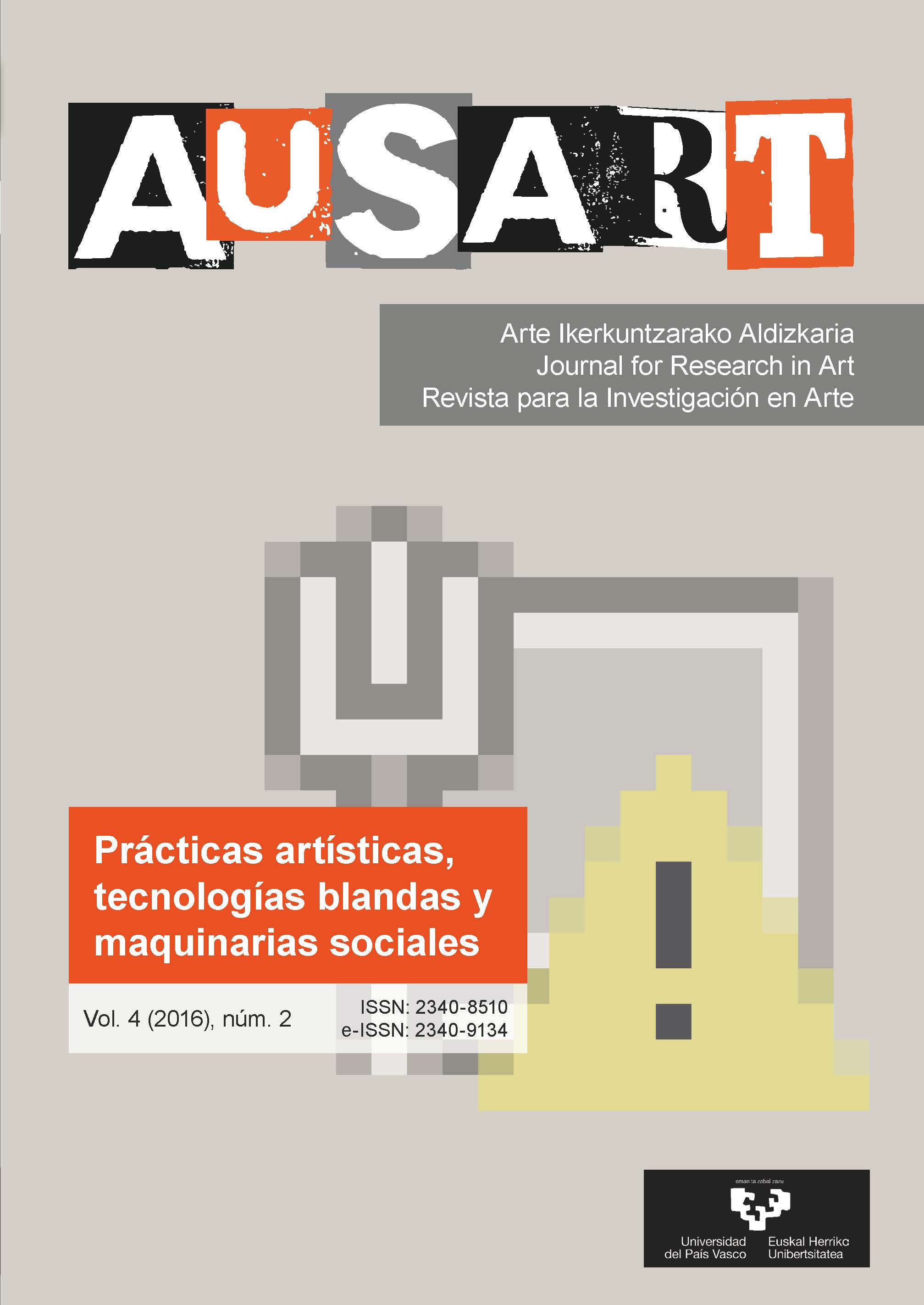El potencial transformador del juego emersivo desde el punto de vista de las prácticas artísticas
##plugins.themes.bootstrap3.article.main##
##plugins.themes.bootstrap3.article.sidebar##
Resumen
Este artículo trata del potencial transformador que surge en los juegos digitales al realizar un cambio de orientación en el vector de atención, que de fuera hacia dentro, o inmersivo, pasa a ser de dentro hacia fuera, o emersivo. Por consiguiente, como los juegos dejan de ser estructuras ensimismadas, se reconoce y explota su capacidad de influir en la persona y la sociedad. Asimismo, se vincula la emersión de los juegos digitales con la emersión de ciertas prácticas artísticas que tratan de influir explícitamente en el individuo y la sociedad para provocar cambios tangibles. En este sentido, el artículo investiga las tecnologías blandas generadas por el juego emersivo y se pregunta qué tienen éstas que ofrecer al campo del arte. Esta investigación considera la emersión de los juegos digitales como un posible referente de tecnologías blandas que pueden ser aplicadas en las prácticas artísticas. En primer lugar examina cómo han sido conceptualizados los límites entre los juegos digitales y la vida cotidiano, en segunda instancia, se exploran posibles maneras de transgredir dichos límites en segunda instancia, y por último se reconoce el potencial transformador del juego emersivo.
Cómo citar
##plugins.themes.bootstrap3.article.details##
PRÁCTICAS ARTÍSTICAS, JUEGOS DIGITALES, EMERSIÓN, TECNOLOGÍAS BLANDAS
Bonsignore, Elizabeth, Kari Kraus, June Ahn, Amanda Visconti, Ann Fraistat & Allison Druin. 2012. «Alternate reality games: Platforms for collaborative learning». En The future of learning: Proceedings of the 10th International Conference of the Learning Sciences ICLS 2012, 251-258. Sydney: ICLS
Castronova, Edward. 2013. «Juegos e internet: un terreno fértil para el cambio cultural». En Cambio: 19 ensayos fundamentales sobre cómo Internet está cambiando nuestras vidas, traducciones, Sebastián Durán, Mar Ozores & Laura Vidal. Madrid: BBVA
Csikszentmihalyi, Mihalyi.1980. «Some paradoxes in the definition of play». En Play as context, Alyce Taylor Cheska, ed., 14-25. West Point NY: Leisure
Deterding, Sebastian, Rilla Khaled, Lennart E. Nacke & Dan Dixon. 2011. «Gamification: Toward a definition». En CHI 2011 conference proceedings and extended abstracts: The 29th annual CHI Conference on Human Factors in Computing Systems, Vancouver BC, May 7-12, 1-4. New York: Association for Computing Machinery
Flanagan, Mary. 2010. «Creating critical play». En Artists rethinking games, edited by Ruth Catlow, Marc Garret & Corrado Morgana, 49-53. Liverpool: Foundation for Art and Creative Technology
Huizinga, Johan. (1938) 2010. Homo ludens. Traducción de Eugenio Imaz. Madrid: Alianza
Kaprow, Allan. (1993) 2003. Essays on the blurring of art and life. Edited by Jeff Kelley. Berkerley CA: University of California. https://doi.org/10.1525/9780520930841
McGonigal, Jane. 2011. Reality is broken: Why games make us better and how they can change the world. New York: Penguin
Montola, Markus. 2005. «Exploring the edge of the magic circle: Defining pervasive games». En Proceedings of the 42nd Design Automation Conference, Anaheim Convention Center, Anaheim CA, June 13-17, 16-19. New York: Association for Computing Machinery
Montola, Markus, Jaakko Stenros & Annika Waern. 2009. Pervasive games: Theory and design. Burlington MA: Morgan Kaufman. https://doi.org/10.1201/9780080889795
Szulborski, Dave. 2005. This is not a game: A guide to alternate reality gaming. Morrisville NC: Lulu.com

Esta obra está bajo una licencia internacional Creative Commons Atribución-CompartirIgual 4.0.

Atribución-CompartirIgual 4.0 Internacional (CC BY-SA 4.0)
Usted es libre de:
- Compartir — copiar y redistribuir el material en cualquier medio o formato
- Adaptar — remezclar, transformar y construir a partir del material para cualquier propósito, incluso comercialmente.

